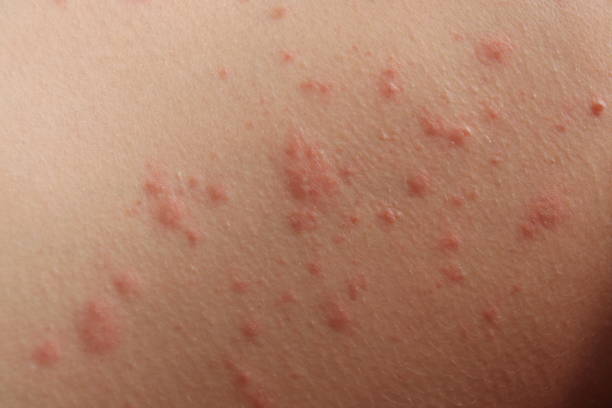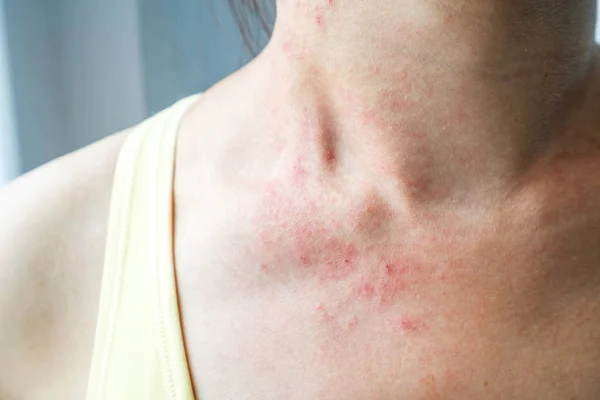Roseola, also known as exanthem subitum or sixth disease, is a common viral infection that affects young children. It is caused by the human herpesvirus 6 (HHV-6) or human herpesvirus 7 (HHV-7).
Symptoms of roseola rash typically begin about 5 to 15 days after exposure to the virus. The most common symptoms include:
- High fever: The fever associated with roseola can be high, reaching up to 104°F (40°C). It usually lasts for 3 to 5 days.
- Rash: After the fever subsides, a rash may appear on the chest, stomach, and back. The rash is made up of pink or red flat or raised bumps that may be itchy. It may also spread to the arms, legs, and face.
- Swollen lymph nodes: Swollen lymph nodes, especially in the neck, may occur during the illness.
- Other symptoms: Other symptoms of roseola may include irritability, runny nose, sore throat, and diarrhea.
Most children with roseola recover within a week with no long-term effects. In rare cases, complications such as seizures or encephalitis (inflammation of the brain) may occur.
Treatment for roseola rash typically involves supportive care to manage the symptoms. This may include:
- Fever reducers: Over-the-counter fever reducers such as acetaminophen or ibuprofen can be used to bring down the fever and reduce discomfort.
- Fluids: It is important to keep your child hydrated by offering plenty of fluids, such as water, juice, and broth.
- Rest: Encourage your child to get plenty of rest to allow their body to heal.
- Cool baths: A cool bath can help bring down the fever and soothe the skin.
It is important to keep your child away from other people, especially young children and those with weakened immune systems, until the fever has been gone for at least 24 hours.
In most cases, no specific treatment is needed for roseola. It is a self-limited illness that resolves on its own within a week. However, it is important to contact your healthcare provider if your child has a high fever or appears lethargic or dehydrated.
Prevention of roseola includes washing hands frequently, avoiding close contact with infected individuals, and practicing good hygiene. It is also recommended that children receive the MMR (measles, mumps, and rubella) vaccine, as it provides protection against roseola.
In conclusion, roseola is a viral infection that affects young children and is characterized by a high fever and rash. Symptoms typically resolve within a week with supportive care. It is important to practice good hygiene and receive recommended vaccines to prevent the spread of the virus. If you have concerns about your child’s health, it is always best to consult with a healthcare professional.

 Home
Home Health
Health Diet & Nutrition
Diet & Nutrition Living Well
Living Well More
More












